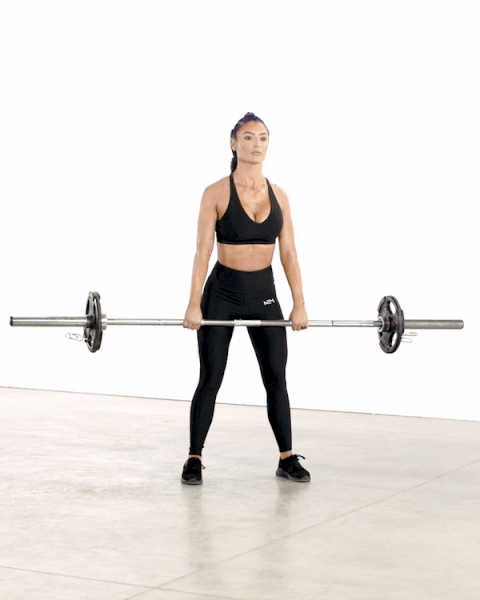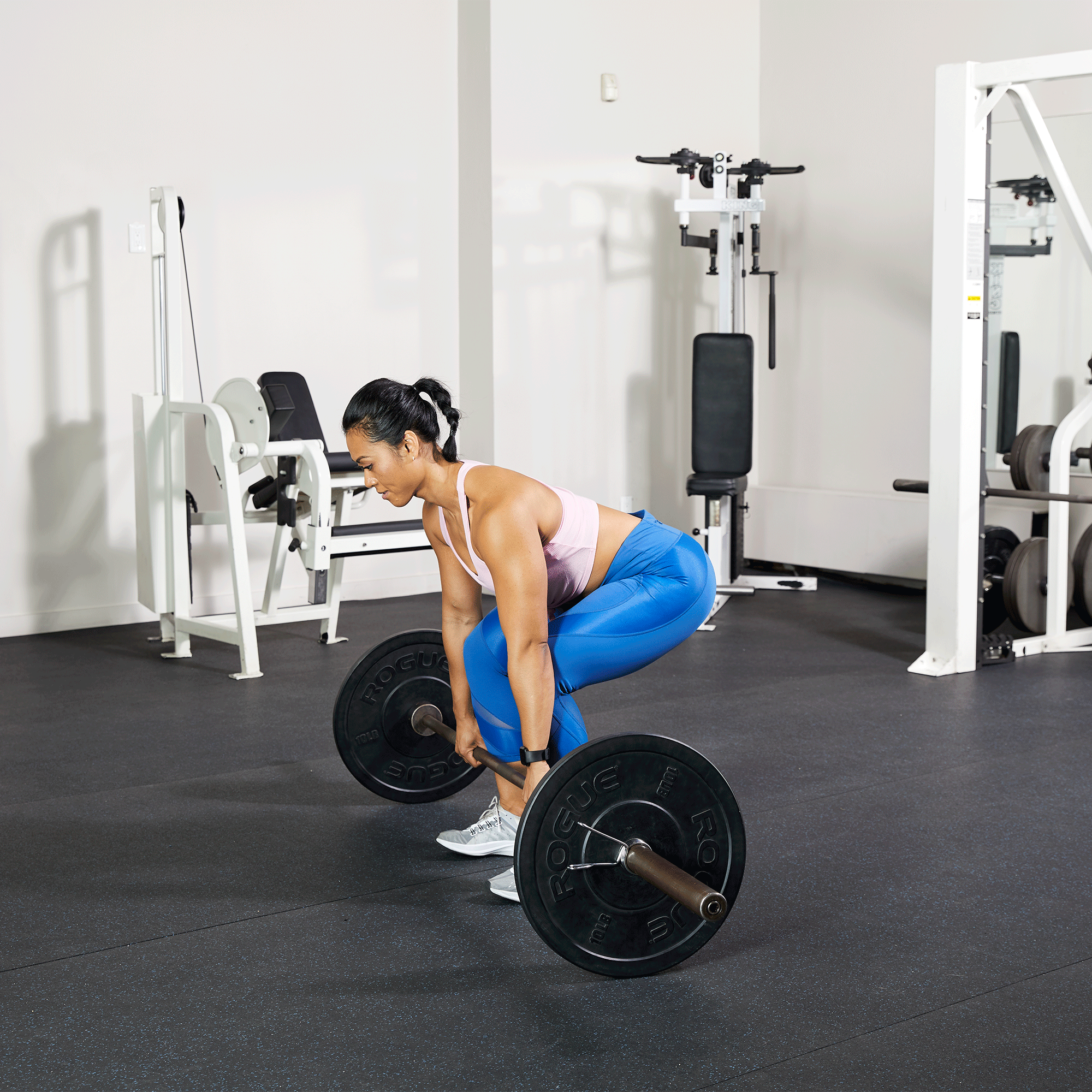I think one of the best ways I’ve connected with my clients is my humor for all the dumb things I’ve done in fitness over the years.
They can’t possibly tell me something they’ve done that I haven’t done already.
I can’t say I’m proud of my shenanigans, but I don’t regret most of them as they’ve helped me relate better as a coach.
Let me tell you a story about early in my lifting days that bruised more than my ego…
I was warming up on barbell squats, getting ready to workout.
I squatted the bar for 10 reps. Racked it, then loaded a 45lbs plate. I unracked it, took it out, and totally failed the first rep.

It was an awkward slow fail, as if my body was still trying to figure out what was happening. I sort of melted down into the floor, like ice cream on hot a sidewalk.
With the bar still on my back and me pinned to the floor, I sheepishly yelled for friends as they ran over to save my squashed ego.
i thought, what the hell was that? I shouldn’t have failed a warm up.
Totally embarrassed, I continued squatting but didn’t actually squat the amount that was planned. Physically I might have been able to, but mentally I was scared.
Why I Failed
In my early lifting days I really didn’t understand why I failed my warm up. My best squat was 245ish and I thought I shouldn’t have failed a weight that was so much lighter.
However, I had no clue how to warm-up into a working set. Meaning, how much weight I squat before I get to the actual weight I’m supposed to be lifting that day.
➡️ ➡️ Here are some hard truths I did not acknowledge which caused me to fail. My hope is that you can learn from them:
❌ My body was not prepared to make that big of a jump.
I, like some wives who begin training with their spouse, mindlessly slapped on a plate as my husband did. Did it matter he was twice my size? Psshh no 🙄
- My strength was not high enough to validate a 90lbs jump. I was only working up to 185lbs. If you do the math, my 2nd warm up set was almost 75% of 185lbs. Why is this problematic? This was significantly more weight than my body was prepared to lift.
—> Warming up is like developing a good tan. You could go out in 99-degree sun for hours and get a huge amount of color that would most likely burn you to a crisp. Or, you could develop a tan with small sun exposures and get your skin used to the rays, resulting in an envious J-Lo glow. Warming up correctly is smart tanning.<—

❌ I had not established a good set-up, bracing or even proper technique.
My squat was all over the place. Each rep was different, nothing was really consistent for many reasons:
- I lackadaisically got set up under the bar and never thought about any preparatory actions besides getting it back up.
- I never properly braced, thought about my walkout, or what my feet or hands were doing besides holding me up. (* I now establish a checklist for my clients that they go through before each rep to make sure this doesn’t happen to them.)

How You Should Warm-up
Many people I work with use how they feel to determine what weight they warm-up with. Although this has a place, it can be problematic for novice lifters.
Newer lifters have minimal experience handling weight. Their judgment on what’s heavy or what’s light can be skewed, and in my opinion, often flawed with ego. What weight they pick based on that feeling can lead them down the wrong path.
📌 Insert my fail.
Here is a pretty foolproof way to set up your warm-ups.
✅ Take 4 warm-up sets to get to your working weight evenly.
- Take your work weight of the day, subtract the bar (45 lbs), and then divide the difference by 4, since you will make 4 total jumps in weight.
✔️ Let’s use my lift as the first example. The weight I need to get to is 185lbs.
185lbs-45lbs (bar)= 140lbs. 140lbs divided by 4 is 35. I would do 35lbs jumps.
I should have done something like this:
- Warm up 1, Empty bar, 1 set of 5-10
- Warm up 2, 80lbs for 1 set of 5
- Warm up 3, 115lbs for 1 set of 3-5
- Warm up 4, 150lbs for 1 set of 2-5
- Working set, 185lbs for 3 sets of 5 reps
Adjustments & Considerations
Here are a few things to keep in mind when choosing the weight. Try not to overthink it and keep it simple and sensible.
- Depending on the lifter and the amount of weight being lifted that day, I will sometimes do 5 jumps, though I’ll keep the reps around 2. Enough reps to “feel the weight”, but not too many as to take away from their main training.
- You can round up or down in weight if you are in-between numbers. I advise rounding down if you’re not sure.
- To keep the proper height of the barbell to initiate the deadlift, you might have to make your second jump 135lbs. If you have 10lbs or 25lbs rubber plates available and your jumps calculate for that amount, I’d suggest using them. But for many, a 45lbs plate is most available.

1. Too low to the ground, not the best starting place

2. Proper height for barbell deadlift
✔️ Let’s use a deadlift as the second example. Our working weight is 285lbs.
285lbs-45lbs (bar) =240lbs. 240lbs divided by 5 is 48lbs. I would do 48lbs jumps.
Here is an example if you have rubber plates to keep the proper height for a deadlift:
- Warm up 1, Empty bar, 1 set of 5-10
- Warm up 2, 95lbs for 1 set of 5
- Warm up 3, 140lbs for 1 set of 3-5
- Warm up 4, 185lbs for 1 set of 2-5
- Warm up 5, 235lbs for 1 set of 2-5
- Working set, 285lbs for 3 sets of 5 reps
✔️ Here is an example of the jumps if you DO NOT have rubber plates and must jump to 135lbs for the second warm up:
- Warm up 1, Empty bar, 1 set of 5-10
- Warm up 2, 135lbs for 1 set of 5
- Warm up 3, 185lbs for 1 set of 3-5
- Warm up 4, 230lbs for 1 set of 2-5
- Working set, 285lbs for 3 sets of 5 reps
Remember, maximize your time in the gym as best as you can. Don’t overthink this process and don’t spend too much time getting to your working weight.
If you stick to this general template, it won’t steer you wrong. You’ll have a plan and be able to get to your working weight safely.
💥 Now let’s get to work!
By the way… It’s never too late to start. Strength is for everyone. See if our 30-day kickstart program is right for you. Or maybe Online fitness & nutrition program might be the accountability you need.
Do you want to get these delivered straight to your email? Join our newsletter!
